Full-Scale Drinking Water System Decontamination at the Water Security Test Bed
Abstract
The US Environmental Protection Agency's (USEPA's) Water Security Test Bed (WSTB) facility is a full-scale representation of a drinking water distribution system. In collaboration with the Idaho National Laboratory, USEPA designed the WSTB facility to support full-scale evaluations of water infrastructure, premise plumbing, and appliance decontamination. Thus far, USEPA's research has focused on decontamination of Bacillus globigii (BG) spores, a nonpathogenic surrogate for Bacillus anthracis, and Bakken crude oil. Flushing and disinfection effectively removed 7–8 log10 BG spores from the bulk water, but only 2–3 log10 from the pipe wall coupons. Bakken crude oil components were then removed from distribution pipe and premise plumbing water by flushing, although 55% of the injected oil components persisted in the dishwasher and refrigerator water dispenser. Using the WSTB facility allows USEPA to test contaminants without any human health or ecological risk and to inform water systems on effective methodologies for responding to contamination incidents.
- Authors:
-
- US Environmental Protection Agency (EPA), Cincinnati, OH (United States)
- Idaho National Lab. (INL), Idaho Falls, ID (United States)
- CB&I Federal Services LLC, Cincinnati, OH (United States)
- Publication Date:
- Research Org.:
- Idaho National Lab. (INL), Idaho Falls, ID (United States); CB&I Federal Services LLC, Cincinnati, OH (United States)
- Sponsoring Org.:
- USDOE Office of Nuclear Energy (NE); USEPA Office of Research and Development (ORD) National Homeland Security Research Center (NHSRC)
- OSTI Identifier:
- 1411733
- Report Number(s):
- INL/JOU-17-42028
Journal ID: ISSN 1551-8833
- Grant/Contract Number:
- AC07-05ID14517; DW‐89‐92381801; EP‐C‐14‐012
- Resource Type:
- Accepted Manuscript
- Journal Name:
- Journal - American Water Works Association
- Additional Journal Information:
- Journal Volume: 109; Journal Issue: 12; Journal ID: ISSN 1551-8833
- Publisher:
- American Water Works Association
- Country of Publication:
- United States
- Language:
- English
- Subject:
- 54 ENVIRONMENTAL SCIENCES; 42 ENGINEERING; Bacillus spores; crude oil; decontamination; security; oil; distribution systems; Idaho; disinfection; contaminants; water contamination; premise plumbing
Citation Formats
Szabo, Jeffrey, Hall, John, Reese, Stephen, Goodrich, Jim, Panguluri, Sri, Meiners, Greg, and Ernst, Hiba. Full-Scale Drinking Water System Decontamination at the Water Security Test Bed. United States: N. p., 2017.
Web. doi:10.5942/jawwa.2017.109.0141.
Szabo, Jeffrey, Hall, John, Reese, Stephen, Goodrich, Jim, Panguluri, Sri, Meiners, Greg, & Ernst, Hiba. Full-Scale Drinking Water System Decontamination at the Water Security Test Bed. United States. https://doi.org/10.5942/jawwa.2017.109.0141
Szabo, Jeffrey, Hall, John, Reese, Stephen, Goodrich, Jim, Panguluri, Sri, Meiners, Greg, and Ernst, Hiba. Fri .
"Full-Scale Drinking Water System Decontamination at the Water Security Test Bed". United States. https://doi.org/10.5942/jawwa.2017.109.0141. https://www.osti.gov/servlets/purl/1411733.
@article{osti_1411733,
title = {Full-Scale Drinking Water System Decontamination at the Water Security Test Bed},
author = {Szabo, Jeffrey and Hall, John and Reese, Stephen and Goodrich, Jim and Panguluri, Sri and Meiners, Greg and Ernst, Hiba},
abstractNote = {The US Environmental Protection Agency's (USEPA's) Water Security Test Bed (WSTB) facility is a full-scale representation of a drinking water distribution system. In collaboration with the Idaho National Laboratory, USEPA designed the WSTB facility to support full-scale evaluations of water infrastructure, premise plumbing, and appliance decontamination. Thus far, USEPA's research has focused on decontamination of Bacillus globigii (BG) spores, a nonpathogenic surrogate for Bacillus anthracis, and Bakken crude oil. Flushing and disinfection effectively removed 7–8 log10 BG spores from the bulk water, but only 2–3 log10 from the pipe wall coupons. Bakken crude oil components were then removed from distribution pipe and premise plumbing water by flushing, although 55% of the injected oil components persisted in the dishwasher and refrigerator water dispenser. Using the WSTB facility allows USEPA to test contaminants without any human health or ecological risk and to inform water systems on effective methodologies for responding to contamination incidents.},
doi = {10.5942/jawwa.2017.109.0141},
journal = {Journal - American Water Works Association},
number = 12,
volume = 109,
place = {United States},
year = {Fri Dec 01 00:00:00 EST 2017},
month = {Fri Dec 01 00:00:00 EST 2017}
}

 Search WorldCat to find libraries that may hold this journal
Search WorldCat to find libraries that may hold this journal